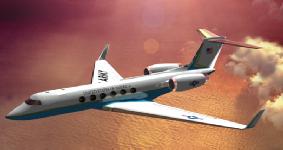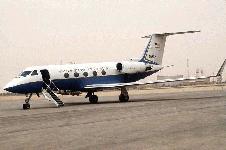





The C-20 was chosen in June 1983 as the replacement aircraft for the C-140B Jetstar, and three A models were delivered to the 89th Airlift Wing at Andrews Air Force Base MD under a cost-saving accelerated purchase plan. The three C-20As at Andrews were subsequenty transferred to Ramstein Air Base, Germany, and all C-140Bs at both locations were phased out of the Air Force inventory. Seven B-model C-20s fly special air missions from Andrews. The primary difference between the C-20A and B model is the electrical system and the avionics package.
C-20B aircraft will reach their 20,000-hour service life in about 2014. Gulfstream's current production of G-IVs appears to secure the logistic support base for C-20s for the foreseeable future. Although the C-20B is not Stage 3 compliant, the C-20H (G-IV) does meet future FAA noise requirements. A Statement of Need and Operational Requirements Document has been validated for a small VC-X aircraft. The 89th Airlift Wing will receive two Gulfstream V aircraft in FY98 to be designated C-37As. AMC has conducted a SAM modernization study, approved by the CSAF, which recommends replacing C-20Bs with additional C-37As.Specifications | |
| Primary Function | C-20A, operational support airlift; C-20B, special air missions |
| Builder | Gulfstream Aerospace Corp |
| Power Plant | Two Rolls-Royce Spey MK511-8 turbofan engines |
| Thrust | 11,400 pounds each engine |
| Length | 83 feet, 2 inches |
| Height | 24 feet, 6 inches |
| Wing Span | 77 feet, 10 inches |
| Speed | 576 mph (501 nautical miles) maximum |
| Maximum Takeoff Weight | 69,700 pounds. |
| Range | 4,715 miles (4,100 nautical miles) long-range |
| Load | 14 passengers |
| Crew | Five |
| Unit Cost | $22.2 million |
| Date Deployed | 1983 |
| Inventory | Active force, 10 |


